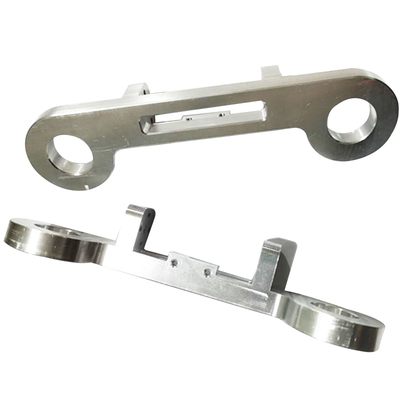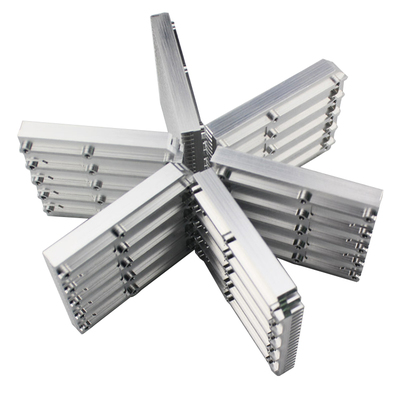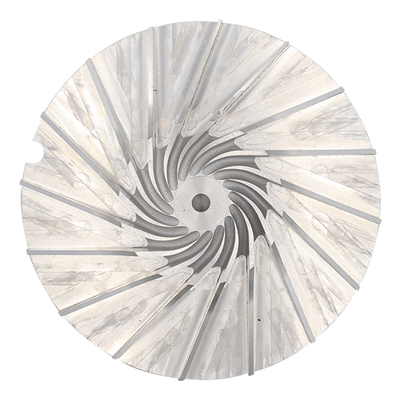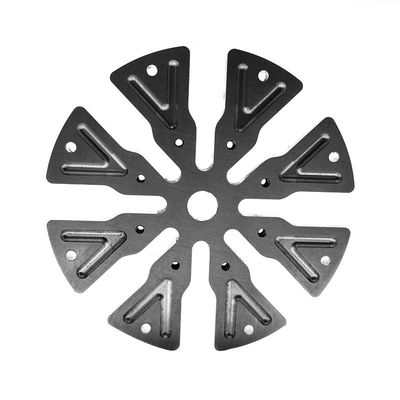New breakthrough in iron-based metallic glass
Recently, the team of Professor Zhang Laichang from Edith Cowan University in Australia discovered an iron-based metallic glass. This material looks like a piece of ordinary household tin foil, but it can effectively remove organics and heavy metals in sewage. Brings unlimited possibilities for the treatment of wastewater from the dye industry and mining industry.
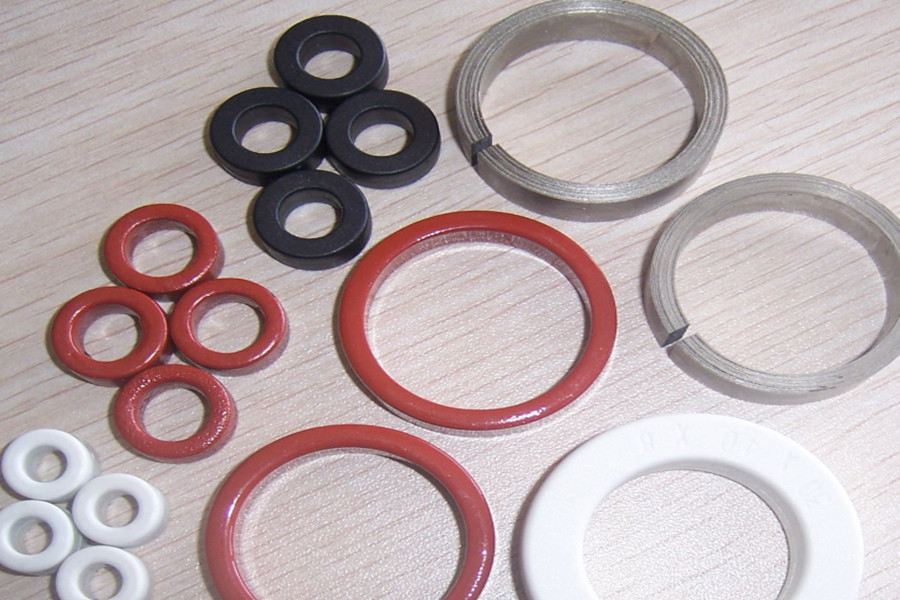
Amorphous materials are also called amorphous or glassy materials. This is a large class of rigid solids with high hardness and high viscosity coefficient comparable to crystalline materials (usually 10 poise, that is, 10 Pa·s or more, It is 10 times the viscosity coefficient of a typical fluid). However, the spatial arrangement of its atoms and molecules does not show periodic and translational symmetry, and the long crystalline order is destroyed; it is only due to the interaction between the atoms that it is within a small area of a few atoms (or molecules) in diameter. Has a short program. Since there is no effective experimental method to accurately determine the atomic structure of amorphous materials, the above definitions are relatively speaking. There are many methods to prepare amorphous materials, the most common ones are quenching of the melt and deposition from the vapor phase (such as evaporation, ion sputtering, glow discharge, etc.). In recent years, new technologies such as ion bombardment, strong laser radiation and high-temperature blasting have been developed, and large-scale continuous production has been possible.
As a kind of rigid solid with special structure, metallic glass has higher strength than general metal (such as amorphous Fe80B20, breaking strength σF reaches 37kgf/mm, which is more than seven times that of general structural steel); and the size effect of strength is very high. small. Its elasticity is also better than that of ordinary metals, and its bending deformation can reach more than 50%. The hardness and toughness are also very high (Vickers hardness HV is generally around 1000-2000).
The corrosion resistance of iron-based metallic glass with low chromium content (such as Fe27Cr8P13C7) is far better than that of stainless steel. Due to the long-range disorder of the atomic arrangement, the contribution of phonons to the scattering of conducted electrons is very small, making the resistivity very high, generally above 100μΩ·cm at room temperature, and the temperature coefficient of resistivity is very small (less than ±10K); It has a very high residual resistance at 0K. In some amorphous alloys (such as PdSiCr), the resistance has a minimum value when the resistance temperature curve T=Tm, when T
There are 15 kinds of amorphous quenched superconducting alloys that have been reported. Their superconducting transition temperature is 1.5-8.71K, which is lower than that of crystalline superconductors. It is characterized by far stronger radiation resistance than crystalline superconductors. The metallic glass based on transition metals (iron, cobalt, nickel) has excellent soft magnetic properties (see magnetic materials), high magnetic permeability and low AC loss, far better than commercial silicon steel sheets, and can be compared with permalloy. For example, (Fe4Co96) (P16B6Al3) amorphous alloys have coercivity Hc≈0.13Oe and remanence Br≈4500G, which may be widely used in high and low frequency transformers (partially replacing silicon steel sheets and permalloy), magnetic sensors, and recording Magnetic heads, magnetic shielding materials, etc.
After research, the internal structure of glass has no "spatial lattice" feature, but is similar to the liquid structure. It's just that the "quasi-crystal regions" cannot move with each other, causing the glass to have no fluidity. We call this state "amorphous state". Strictly speaking, "amorphous solids" do not belong to solids, because solids refer exclusively to crystals; it can be regarded as a very viscous liquid. Therefore, "amorphous state" can be proposed as another state of matter. In addition to ordinary glass, there are many "amorphous" solids, such as rubber, paraffin, natural resin, asphalt, and polymer plastics.
However, not all materials can obtain a completely amorphous structure from a rapidly cooled molten alloy. How to effectively use partially crystalline amorphous materials has become a new topic.
Zhang Laichang’s team found that under the combined action of hydrogen peroxide and fully crystalline iron-based materials, the methylene blue dye can be quickly degraded. They used a high-temperature heat treatment method to rearrange the original disordered structure in the metallic glass, thereby obtaining a crystalline material containing multiphase intermetallic compounds. In the process of heat treatment, as the temperature increases, the formed crystal grains will continue to increase, which provides a convenient channel for the rapid transfer of electrons inside the crystal grains. Moreover, because the multiphase intermetallic compound has a significant potential difference, it is easy to form countless tiny galvanic cells inside the material, so that the electrons are transferred spontaneously during the reaction. In sewage treatment, rapid electron transfer can effectively transform pollutants into harmless substances such as water, carbon dioxide, and small inorganic molecules. In other words, the faster the electron transfer, the higher the decontamination efficiency.
Experimental results show that this iron-based metal material is faster than the existing technology for removing heavy metals and dyes and other organic substances. According to statistics, the cost of using this new material to treat 1 ton of sewage is only about $15. More importantly, the form of the block strip is more conducive to practical applications, and its cycle times are more than 5, which has considerable economic benefits.
Link to this article: New breakthrough in iron-based metallic glass
Reprint Statement: If there are no special instructions, all articles on this site are original. Please indicate the source for reprinting:https://www.cncmachiningptj.com
 PTJ® provides a full range of Custom manufacturer of precision fabricated parts made from aluminum parts, brass parts, bronze, copper parts, high yield alloy, low carbon steel investment casting, high carbon steel and stainless steel alloy. Capable of handling parts up to +/-0.0002 in. tolerance. Processes include cnc turning, cnc milling, laser cutting,.ISO 9001:2015 &AS-9100 certified.
PTJ® provides a full range of Custom manufacturer of precision fabricated parts made from aluminum parts, brass parts, bronze, copper parts, high yield alloy, low carbon steel investment casting, high carbon steel and stainless steel alloy. Capable of handling parts up to +/-0.0002 in. tolerance. Processes include cnc turning, cnc milling, laser cutting,.ISO 9001:2015 &AS-9100 certified.
Tell us a little about your project’s budget and expected delivery time. We will strategize with you to provide the most cost-effective services to help you reach your target,You are welcome to contact us directly ( [email protected] ) .

- 5 Axis Machining
- Cnc Milling
- Cnc Turning
- Machining Industries
- Machining Process
- Surface Treatment
- Metal Machining
- Plastic Machining
- Powder Metallurgy Mold
- Die Casting
- Parts Gallery
- Auto Metal Parts
- Machinery Parts
- LED Heatsink
- Building Parts
- Mobile Parts
- Medical Parts
- Electronic Parts
- Tailored Machining
- Bicycle Parts
- Aluminum Machining
- Titanium Machining
- Stainless Steel Machining
- Copper Machining
- Brass Machining
- Super Alloy Machining
- Peek Machining
- UHMW Machining
- Unilate Machining
- PA6 Machining
- PPS Machining
- Teflon Machining
- Inconel Machining
- Tool Steel Machining
- More Material

